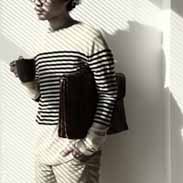U.S. History Content Vocabulary: Imperialism – Flashcards
Unlock all answers in this set
Unlock answersquestion
Queen Liliuokalani
answer
the Hawaiian queen who was forced out of power by a revolution started by American business interests
question
Imperialism
answer
A policy in which a strong nation seeks to dominate other countries poitically, socially, and economically.
question
Alfred T. Mahan
answer
us navy captain who encouraged the us to look outward for military bases, raw materials, markets
question
The Influence of Sea Power upon History, 1660-1783
answer
A book written by Alfred T. Mahan
question
William Seward
answer
United States politician who as secretary of state in 1867 arranged for the purchase of Alaska from Russia (known at the time as Seward's Folly) (1801-1872)
question
Pearl Harbor
answer
United States military base on Hawaii that was bombed by Japan, bringing the United States into World War II. Pearl Harbor was attacked on December 7, 1941.
question
Sanford B. Dole
answer
1894 wealthy, plantation owner and politician who was named President of New Republic of Hawaii. He asked US to annex Hawaii.
question
Jose Marti
answer
Cuban poet and journalist who organized a guerilla revolution against Spain in 1895- "Cuba Libre" free Cuba was his battle cry-and sought US support and intervention.
question
Valeriano Weyler
answer
He was a Spanish General referred to as "Butcher" Weyler. He undertook to crush the Cuban rebellion by herding many civilians into barbed-wire reconcentration camps, where they could not give assistance to the armed insurrectionists. The civilians died in deadly pestholes. "Butcher" was removed in 1897.
question
Yellow Journalism
answer
Journalism that exploits, distorts, or exaggerates the news to create sensations and attract readers.
question
U.S.S. Maine
answer
Ship that explodes off the coast of Cuba in Havana harbor and helps contribute to the start of the Spanish-American War
question
George Dewey
answer
a United States naval officer remembered for his victory at Manila Bay in the Spanish-American War, U.S. naval commander who led the American attack on the Philippines
question
Rough Riders
answer
The First United States Volunteer Calvary, a mixure of Ivy League athletes and western frontiermen, volunteered to fight in the Spanish-American War. Enlisted by Theodore Roosevelt, they won many battles in Florida and enlisted in the invasion army of Cuba.
question
San Juan Hill
answer
Site of the most famous battle of the Spanish-American war, where Theodore Roosevelt successfully leads the Rough Riders in a charge against the Spanish trenches
question
Treaty of Paris
answer
Signed by the United States and Spain in December 1898, this treaty ended the Spanish-American War. Under its terms, Spain recognized Cuba's independence and assumed the Cuban debt; it also ceded Puerto Rico and Guam to the United States. At the insistence of the U.S. representatives, Spain also ceded the Phillipines. The Senate ratified the treaty on February 6, 1899.
question
Foraker Act
answer
This act established Puerto Rico as an unorganized U.S. territory. Puerto Ricans were not given U.S. citizenship, but the U.S. president appointed the island's governor and governing council.
question
Platt Amendment
answer
Legislation that severely restricted Cuba's sovereignty and gave the US the right to intervene if Cuba got into trouble
question
Protectorate
answer
a state or territory partly controlled by (but not a possession of) a stronger state but autonomous in internal affairs
question
Emilio Aguinaldo
answer
Leader of the Filipino independence movement against Spain (1895-1898). He proclaimed the independence of the Philippines in 1899, but his movement was crushed and he was captured by the United States Army in 1901. (p. 743)
question
John Hay
answer
Was the Secretary of State in 1899; dispatched the Open Door Notes to keep the countries that had spheres of influence in China from taking over China and closing the doors on trade between China and the U.S.
question
Open Door Notes
answer
message send by secretary of state John Hay in 1899 to Germany, Russia, Great Britain, France, Italy & Japan asking the countries not to interfere with US trading rights in China.
question
Boxer Rebellion
answer
1899 rebellion in Beijing, China started by a secret society of Chinese who opposed the "foreign devils". The rebellion was ended by British troops
question
Panama Canal
answer
Ship canal cut across the isthmus of Panama by United States Army engineers; it opened in 1915. It greatly shortened the sea voyage between the east and west coasts of North America. The United States turned the canal over to Panama on Jan 1, 2000 (746)
question
Roosevelt Corollary
answer
Roosevelt's 1904 extension of the Monroe Doctrine, stating that the United States has the right to protect its economic interests in South And Central America by using military force
question
Dollar Diplomacy
answer
Foriegn Policy idea by Taft to make countries dependant on the U.S. by heavily investing in their economies
question
Francisco "Pancho" Villa
answer
A popular leader during the Mexican Revolution. An outlaw in his youth, when the revolution started, he formed a cavalry army in the north of Mexico and fought for the rights of the landless in collaboration with Emiliano Zapata. (819)
question
Emiliano Zapata
answer
leading figure in the Mexican Revolution, which lasted 10 years; 1910-1920; faught for farmers' rights; gathered army in southern Mexico and urged farmers to join; Liberation Army of the South
question
John J. Pershing
answer
Commander of American Expeditionary Force of over 1 million troops who insisted his soldiers fight as independent units so US would have independent role in shaping the peace



